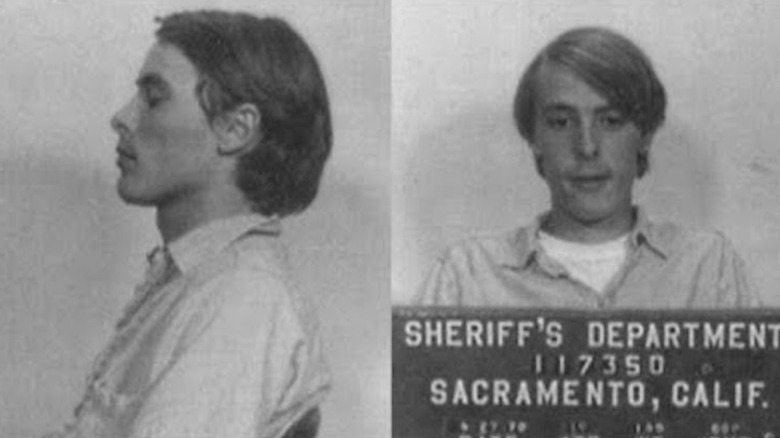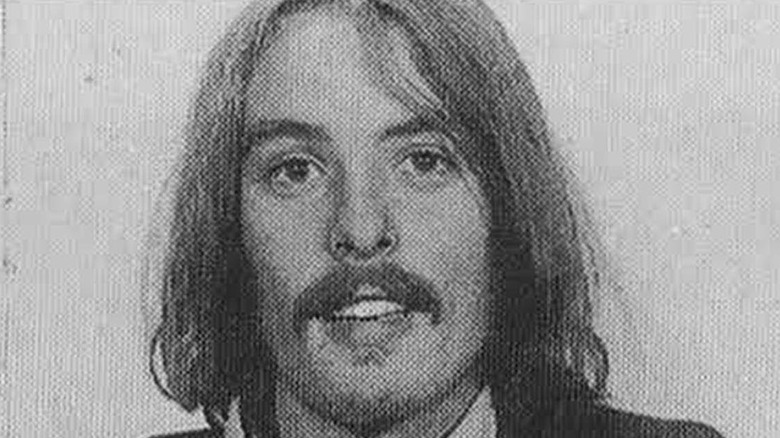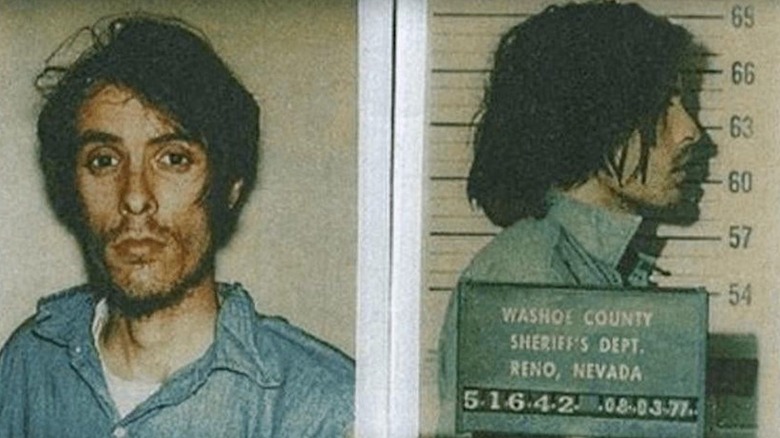The Real Reason Richard Chase Was Known As The Vampire Killer
The 1970s saw several serial killers, including the likes of Ted Bundy, John Wayne Gacy, and David "Son of Sam" Berkowitz, gain notoriety for their crimes and strike fear in the hearts of people as law enforcement authorities sought to bring them to justice. Compared to those individuals, Richard Trenton Chase doesn't get talked about as often, but he definitely stood out from many of his contemporaries for his unusual M.O., which earned him the nicknames "Vampire of Sacramento" and "Vampire Killer."
As documented by All That's Interesting, Chase had an unhappy childhood and struggled with mental illness and substance abuse from a very young age. By the time he was in his mid-20s, he had already been institutionalized, and it would be a few years after his release when he started to kill.
Over a span of about one month, Chase had killed six people, including two young children. He was ultimately charged for those murders and sentenced to death by gas chamber, and was found dead in his jail cell on December 26, 1980, after apparently overdosing on prescription drugs. But in the years before that murderous rampage, Chase was already displaying several of the characteristics and behaviors that gave him the Vampire Killer nickname and other similar monikers.
Richard Chase started drinking blood due to his extreme hypochondria
According to All That's Interesting, Richard Chase's obsession with blood — hence his reputation as the Vampire Killer — was born out of the extreme hypochondria he manifested as a result of his use of psychotropic drugs. The vampiric connection showed early on when he believed that his heart had stopped, essentially making him a walking corpse. But his taste for blood really became evident after he was institutionalized in 1975 for paranoid schizophrenia — this came after he tried to inject himself with rabbit's blood and became severely ill in the process.
While locked up at the psychiatric facility, Chase reportedly killed several birds and tried to drink their blood, leading certain hospital staff members to nickname him "Dracula." He supposedly did this to counter the effects of a poison that he thought was transforming his blood to powder form. Despite those incidents, the hospital believed that Chase had turned a corner, releasing him from the facility and allowing him to live with his mother. In reality, he was still a very disturbed young man, and it wasn't long before he moved out of his mother's house, convinced at that point that she was trying to poison him.
He also drank the blood of some of his victims
After briefly sharing a house with a few other men, who chose to move out instead of constantly dealing with his bizarre behavior, Chase lived alone for some time, and would kill small animals, either eating them raw or taking their organs and mixing them in a blender with soda, per All That's Interesting. As noted by Murderpedia, he was also apprehended by Nevada police in August 1977 after being spotted naked and screaming, with bloodstains on his body and a bucket of blood and an animal's liver in his pickup truck. Chase was released after it was found that the liver and blood belonged to a cow, but that was one red flag that shouldn't have been ignored, considering what happened later that year.
On December 29, 1977, Chase claimed his first human victim, Ambrose Griffin, and on January 23, 1978, he shot a pregnant woman named Teresa Wallin before stabbing her repeatedly, removing her organs, and drinking her blood. Four days later, he killed four more people, including Evelyn Miroth, who was found partially cannibalized with several of her organs missing.
Following Chase's arrest, authorities discovered that all of his kitchen utensils had blood stains on them and that he stocked his refrigerator with human brains. Indeed, Chase's literal bloodlust was on display even at home, and the jury in his trial wasn't swayed by his lawyers' attempts to save him from the death penalty by pleading not guilty by reason of insanity.


